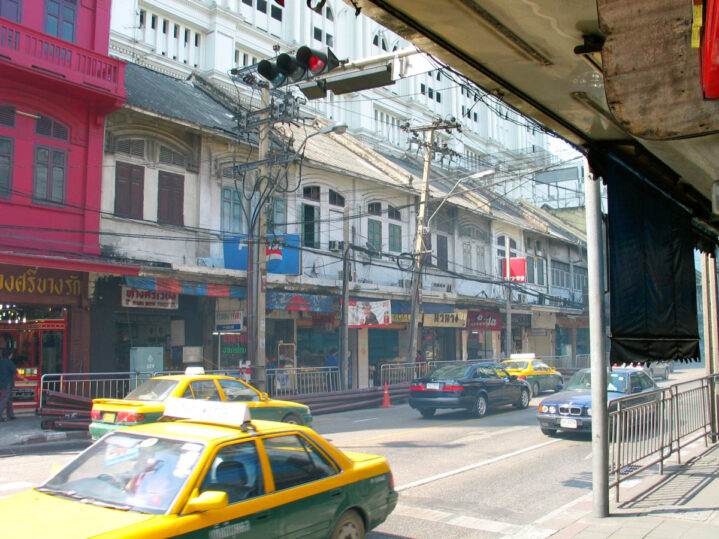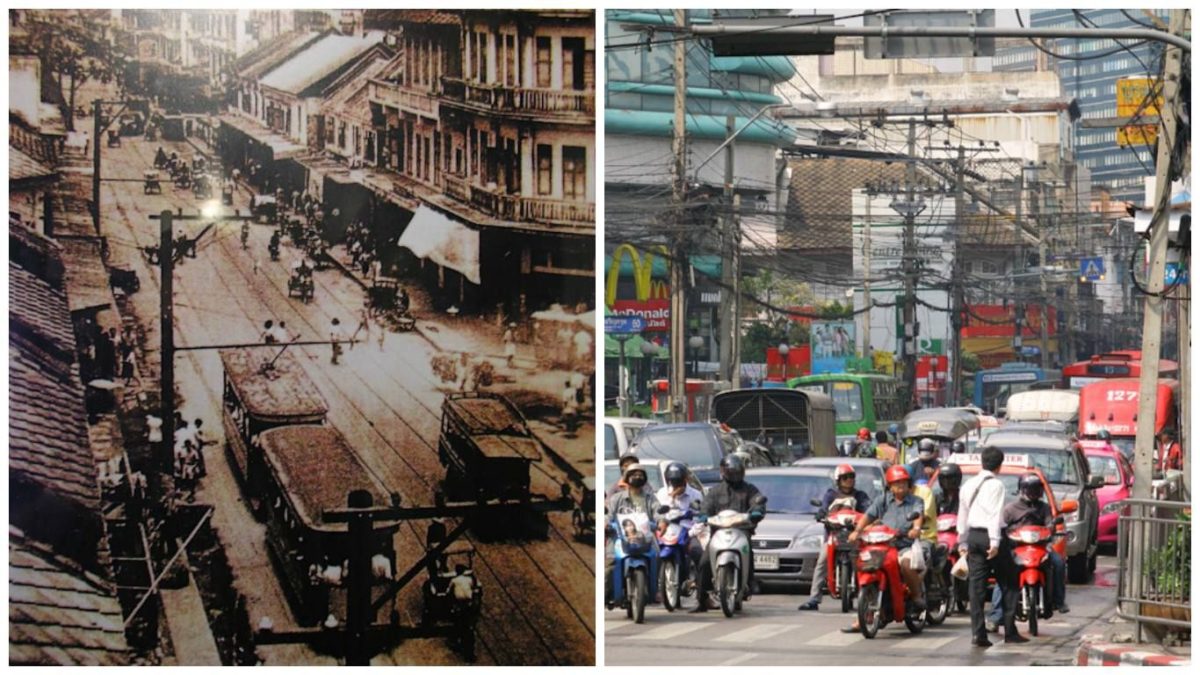
New road – Chareon Krung
It is both amusing and ironic that the oldest river in the U.S.A. is named ‘New River’ and the oldest road in Bangkok is named ‘New Road’ or ‘Charoen Krung’. Although many things in Thailand are purely Thai, ‘New Road’ – along with other imports like Thai classical dance (borrowed from Cambodia), the Thai alphabet (derived from Mon and Khmer), ‘Foi Thong’ (sweet dessert brought over by the Portuguese), and ‘Prik khee nus’ (hot chilli peppers directly from Mexico through the Philippines) – originated with a request from the local resident expats over 150 years ago.
Back then the quickly growing number of ‘farangs’ in Bangkok expat areas wanted a place where they could ‘promenade’. This is where they just simply went out in horse drawn carriages, riding on horseback, or walking along the street, taking in some fresh air and to socialise in public as they did in Europe daily or on the weekends during the early evening hours. They firmly believed this activity was very important for their pleasure, health and mental wellbeing. They claimed they were growing ill without going out for a daily stroll. All the foreign ambassadors and counsels presented an unanimously signed petition to King Mongkut (Rama V) in 1861. The King reflected that the expats had made a valid point and that Thai roads in the city were not the best. He agreed that a new system of roads should be built. Construction was commenced in 1862. Charoen Krung was the first one.
It is a common misperception that Charoen Krung Road was the first road ever built in Bangkok. Actually, there were unpaved roads from the beginning of the city. But they were little more than rough pathways or alleyways. All these unpaved roads were not much to look at, especially during the rainy season. Charoen Krung was the first major paved road in the city. What also marks the roadway as different it was the first road built using modern construction methods. Another common misperception is ‘Charoen Krung’ means ’New Road’ in Thai. At that time all the streets or roads were officially unnamed. This new thoroughfare was first called ’Thanon Mai’ by the Thais or ‘New Road’. Later King Mongkut (Rama IV) named it Charoen Krung which means ‘Prosperous City’ or ’Prosperity of the City’.
As a transportation landmark, Charoen Krung also marked the shift away from waterborne transportation around the city. It started the eastward urban development of Bangkok. It also signified the time when roads were to become the most important means of travel since the city proper then closely hugged the Chao Phaya River. All the embassies, important businesses and trading companies, major residencies and warehouses were all set up facing the riverside. As expats started moving to Thailand in greater numbers each year after the commercial Bowring Treaty was signed in 1855 there needed to be more transportation development. Charoen Krung was built behind the embassies, warehouses and residences in two phases roughly paralleling the Chao Phaya River. During this time it also marked the start of foreign ideas and modernisation bring introduced into the country as the Thai government was interested to westernise the country as a counterbalance to regional foreign encroachments in Indo-China and Burma.
When the road was first opened on 16 March 1864, the Thais remarked they had never seen anything like it before. They commented there just weren’t enough people to walk on such large a street due to its size and width. The other roads were narrow and unpaved in comparison. In fact, only one side of the road was used regularly. In 1922 Charoen Krung was renovated with asphalt. It remained the city’s largest thoroughfare and main roadway into the early 20th century.
In another important transportation development for the city, Charoen Krung Road saw the first horse drawn tram start operation in 1888. The tram line was electrified in 1894 and soon expanded to other parts of the city. The service was finally discontinued in 1963.
Although since the start of the 20th century, Charoen Krung has declined in relative commercial importance or prominence as embassies and consulates moved away from the area and new businesses were founded elsewhere. However, the area still retains many colourful neighbourhoods and interesting buildings as Charoen Krung has remarkably not changed for the most part.
Charoen Krung remains an important historical area for local residents and tourists. It represents an important link to Thailand’s past and hopefully part of the future.





